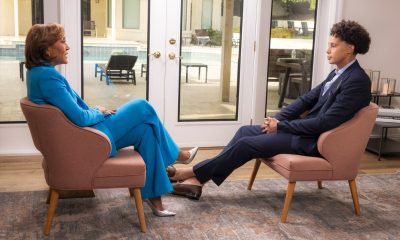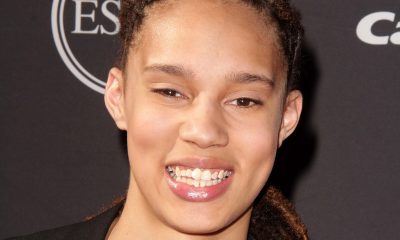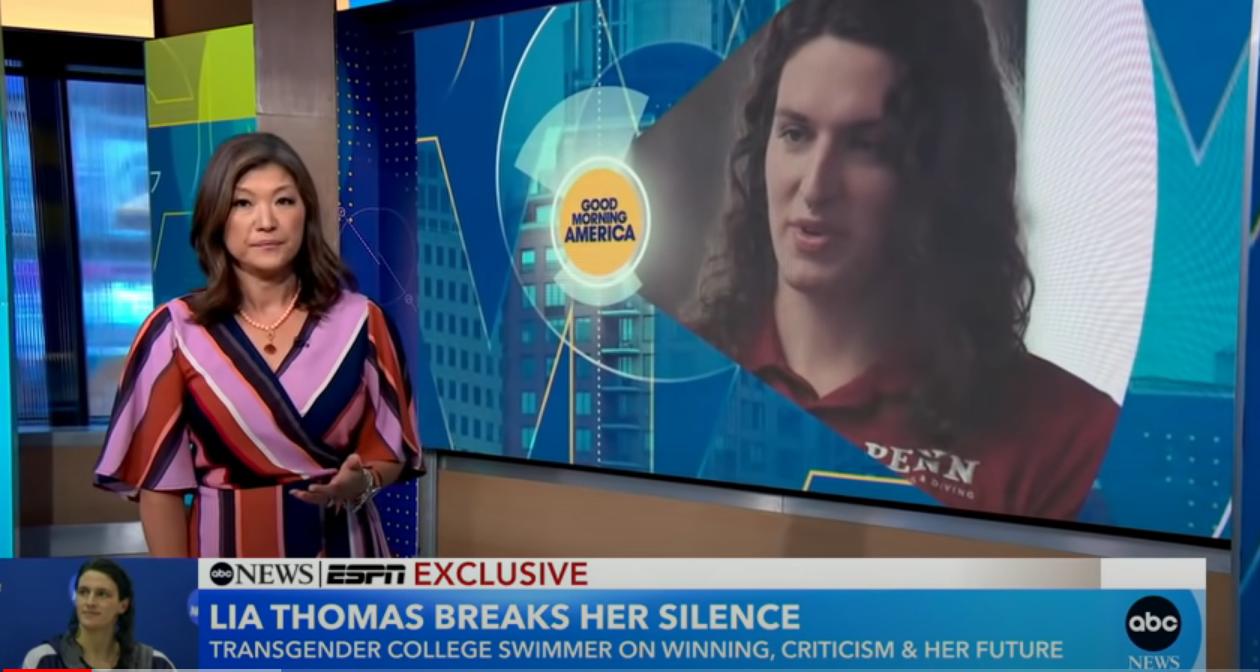a&e features
Gloria Gaynor celebrates ‘I Will Survive’ at Library of Congress festival
1978 classic is centerpiece for ‘Bibliodiscotheque’ event honoring disco era
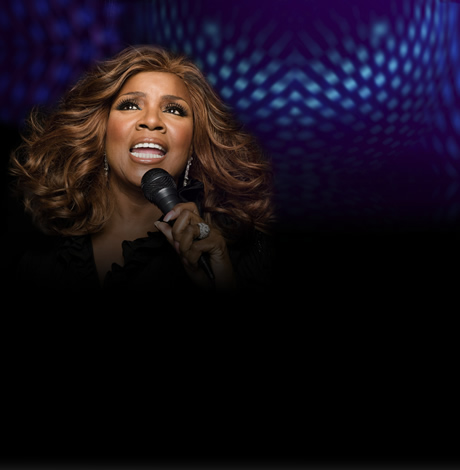

Gloria Gaynor says she used to see ‘I Will Survive’ as a mixed blessing but has come to embrace it as central to her mission to empower and uplift others. (Photo courtesy LOC)
‘Bibliodiscotheque’
Library of Congress
Continues through Saturday, May 6
SCHEDULE:
Friday, May 5:
Music & Veterans Panel Discussion
Noon in Whittall Pavilion
Saturday, May 6:
• ‘Bibliodiscotheque’ symposium with Gloria Gaynor, “Good Morning America” host Robin Roberts et. al. (1 p.m. in Coolidge Auditorium)
• “The Craft of Making Disco Balls” (1 p.m.)
• “Two Perspectives on Beyonce’s African Dance References” (1:30 p.m.)
• “Disco: the Bill Bernstein Photographs” (2 p.m.)
• “Hot Stuff: Disco and the Remaking of American Culture”
• panel discussion, 3 p.m.
• Robin Roberts interviews Gloria Gaynor (4 p.m.)
• Gloria Gaynor, et. al., book signing (5 p.m.)
• Gloria Gaynor in concert (7 p.m. in the Library of Congress Great Hall, sold out)
All events are free and open to the public but tickets must be secured in advance.
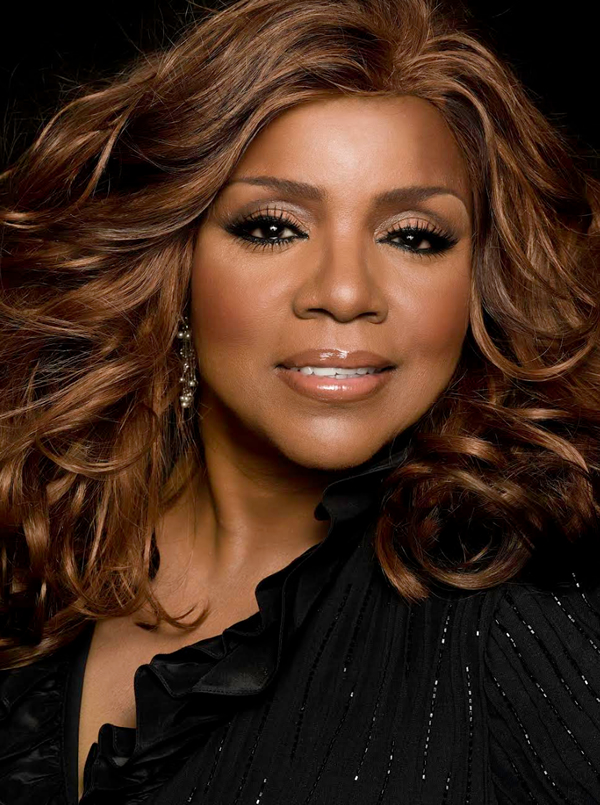
Gloria Gaynor (Photo courtesy LOC)
Gloria Gaynor cracked the U.S. Hot 100 several times throughout the 1970s but, of course, it’s her legendary 1978 No. 1 hit “I Will Survive” for which she’s most identified and remembered.
So universally beloved is the song that the Library of Congress has included it in its National Recording Registry, a list of sound recordings that have been deemed “culturally, historically or aesthetically important and/or inform or reflect life in the United States.” Begun in 2000, it includes everything from Scott Joplin piano rags, Bessie Smith blues, Roosevelt’s Fireside Chats, Abbott and Costello comedy routines and much more.
The Library wraps up its disco-tribute series ‘Bibliodiscotheque’ this weekend with an afternoon of events featuring Gaynor culminating with a free concert in the Great Hall. Gaynor spoke with the Blade by phone from her New Jersey home in March.
WASHINGTON BLADE: How do you feel about “I Will Survive” being inducted into the National Recording Registry and how did your involvement in this weekend’s festivities come about?
GLORIA GAYNOR: The song was inducted into the Library of Congress music registry last year and I honestly don’t know how it came about except that I got a message from my manager that they’d called and wanted to do this event. They first called her and said they were inducting the song and then they called a month later and said they wanted me to do this event, so who actually came up with the idea, it probably came out of the meeting we had with them, but I’ve forgotten now. But I was extremely happy about it. Flattered beyond belief.
BLADE: Had you ever been to the Library of Congress before?
GAYNOR: Not before that meeting. I went down and met with them and looked at the Thomas Jefferson building, the archives and oh my God, it’s an awesome building and an awesome room. It’s going to be acoustically a challenge for my sound people to do the concert there, but what a beautiful place, a beautiful room.
BLADE: When were you there?
GAYNOR: That was in November, I believe.
BLADE: You’ll also be signing copies of your 2013 book “We Will Survive: true Stories of Encouragement, Inspiration and the Power of Song.” What kind of reaction have you received from the book?
GAYNOR: A lot of people write and say how the book encouraged and inspired them, which was my whole purpose in writing the book because I’m thinking if you’re going through something, how encouraging, inspiring and uplifting would it be to read about someone who’s gone through what you’re going through or perhaps something even more difficult and yet they came out of the other side victorious? So when people call me and tell me the book or the song has accomplished my purpose, then of course that’s very encouraging, inspiring and uplifting to me.
BLADE: Why do you think the song still resonates so strongly all these years later?
GAYNOR: It taps into the tenacity of the human spirit. It encourages you and inspires you to reach down inside and pull up whatever support you have inside of you to get you through the difficult times in your life. … We all have situations, circumstances in our lives from time to time that we think are insurmountable and hope we’ll survive.
BLADE: Is it true it was originally slated to be the B-side? That seems inconceivable.
GAYNOR: Oh yes, absolutely. The record company had sent me to these producers out in California to record a song that the president of the company had chosen because he’d had a hit with it in England and wanted to repeat that success here in the United States and he specifically wanted me to help him do that so he sent me out to record that song which was called “Substitute.” And when I asked the producers what was going to be the B-side, they asked me in turn what kind of songs did I like, what kind of songs did I like to sing and record. I told them I like songs that are meaningful and that touch people’s hearts and have good melodies and they said, “Oh, we think you’re the one we’ve been waiting for to record this song that we wrote a couple years ago.”
BLADE: Did you realize right away it had strong hit potential?
GAYNOR: Well, the fact that my mother had passed away just a couple years prior and I never thought I’d survive that and the fact that I was standing there in a back brace from my hip up to my art pit because I’d fallen on stage and woke up the next morning paralyzed from the waist down and was in the hospital for four years wondering what was going to happen to my life, I immediately related to the lyrics and immediately believed that since I was relating a couple of situations to the song that had nothing to do with the unrequited love that the song speaks about, I believed other people would do the same thing. I believed it was a timeless lyric that everybody was going to be able to relate to and time has proven me right.
BLADE: There was such a backlash against disco for years. When did you start seeing it appreciated again? Was that in the ‘90s?
GAYNOR: I always believed when people pulled away from it, that was something that was engineered and was more of an economic decision on the part of people whose bottom line was being negatively affected by the fact that people were buying so much disco music and they probably thought this was taking away from people buying their music so I think they came up with this idea for this big rally in Comiskey Park (in Chicago in 1979) but of course my question has always been if all those people who burned all those disco records hated disco music so much, why did they have those records to start with?
BLADE: It seems like it takes a long period after any pop musical genre is super popular — doo-wop, new wave, whatever — to be revived in a nostalgic way. Do you think it was any different with disco or pretty much the same phenomenon?
GAYNOR: Well I think it was a similar thing, but I don’t think it was that incident that caused it. I think that disco music very unfairly became associated with negative things like drugs and all different kinds of overindulgences and I think that contrary to what people believe, California, Miami and New York don’t run the world, middle America runs the world and middle America said I don’t want my children associated with that, so that was the end of it. It wasn’t really the end of it, but it went more into the underground and went more into the dance music that we have today.
BLADE: What’s your favorite cover of “I Will Survive”?
GAYNOR: Chantay Savage.
BLADE: Why?
GAYNOR: Because she’s the only one who really made it her own. She really changed it and made it her own and did a good job of it.
BLADE: How did it come about that you sang it with Diana Ross at her concert in New Jersey in 2013?
GAYNOR: A friend of mine asked me to go to the concert with her. I didn’t know that she had it in the back of her mind that was she using me to try to meet Diana Ross, but that’s what she did. She had called the management of the theater, I don’t know which now, but she got us really great seats using my name and then they came and got us — I don’t know if she asked for me to meet her or how it went, but that’s how we got backstage. They came and got us from our seats just before the show was over and then Diana Ross invited me onstage, which I never expected. I just thought we were standing there, she was going to come back and say hi, my friend’s gonna get her autograph and we’ll be on our way. But she did invite me on stage and I was very flattered and I thought it was really gracious of her to do that and we had a good time. The audience was ecstatic.
BLADE: Her ‘90s cover was just sort of a modest hit but nothing huge yet she’s been closing all her concerts with it for the last several years. Why do you think she keeps doing that when she had so many big hits of her own that would work in that slot in her show? Any theory on that?
GAYNOR: Well I don’t really need a theory on it because I have the truth of it. My brother was her chauffeur and bodyguard for 15 years and he told me that she said she always wished she’d recorded that song. She just liked it and she’s adopted it.
BLADE: Do you ever feel like maybe she’s hoping casual fans will forget it wasn’t she who had the big hit with it in the ‘70s or that she just likes it?
GAYNOR: I think she just does it because she likes it. She thinks it’s a great song.
BLADE: Was it ever challenging for you to reconcile your Christian faith with being open on gay issues or to gay fans?
GAYNOR? No.
BLADE: Did gays and straights mix more in the disco clubs back in the ‘70s or do you recall?
GAYNOR: Well, we all know that there are gay clubs. At my concerts it was always mixed. It was never just all gay or all straight. It was always mixed.
BLADE: Did gays embrace “I Will Survive” right away or that something that grew over the years?
GAYNOR: I honestly don’t know. When they came to the concerts, as I said, it was always mixed. I don’t really separate my fans into categories and see who’s liking what. My fans are just my fans and they like me and whatever I sing, whatever it is. Some, of course, there are certain songs that certain individuals like more than others because they relate to them more than others, but I don’t think any particular group related more to “I Will Survive” more than any other group because it’s a song about human problems, human trauma.
BLADE: But “I Will Survive” is sort of the ultimate shorthand for gay anthem. It’s been voted the top gay anthem of all time by various publications. Did that come about more after the AIDS years perhaps?
GAYNOR: I really don’t know.
BLADE: You’re a native of Newark, New Jersey, but you were obviously already famous and traveling often when Whitney Houston was coming up. Did you know she and Cissy in Newark when Whitney was growing up?
GAYNOR: I knew (Cissy) as an artist I admired and went to see, but I didn’t know her personally. I met Whitney, you know, after she became famous and we had a mutual admiration for one another. She told me on a number of occasions how inspiring I was to her and how she would pull out my song whenever she was feeling down. She looked up to me and admired me and thanked me for being a positive influence in her life.
BLADE: What’s your favorite hymn or gospel song?
GAYNOR: One that was originally called “I Will Survive” but I recorded it and changed the title so people wouldn’t think it was the same song. Now it’s called “He Gave Me Life.”
BLADE: Have you kept all your career mementos? Do you have clippings and gowns and all that?
GAYNOR: Some, yeah. I’ve kept some clippings and gowns but most of my gowns I’ve given away to friends who are in the music business. That’s primarily what I’ve done. If I’m not using something, I’d rather see someone use it.
BLADE: About how much of the year do you travel?
GAYNOR: Now I’m not traveling as much. I’ve slowed down on purpose. It used to be that I was rarely home for more than two weeks at a time but I was rarely gone for more than two weeks at a time, too. Now it’s more like I’m going out maybe once a month, twice a month. Maybe two or three shows a month.
BLADE: You had other hits but “I Will Survive” has become so much more than just a hit record. Some singers feel it’s a blessing and a curse to be so heavily identified with one song. How do you see it?
GAYNOR: I used to see it as a double-edged sword because I recorded so many other songs that in my opinion are great songs, but I’ve come to understand that this song is the core of my God-given purpose and it’s fine, I’m very pleased for it and I’m very happy for it. I just really believe that God said, you know, I want you to have this, I want you to do this with it, I want you to use it to uplift, encourage and empower people with this song and I am very happy and honored for this purpose. I’m very honored for the opportunity and a kind of responsibility to do that for people and it’s wonderful when people come to me and tell me that this song has encouraged them. And the wonderful thing about it is they don’t just say this song did this for me, they say you did this for me. So it adds meaning and purpose to my life and it’s still very, very encouraging and uplifting for me.
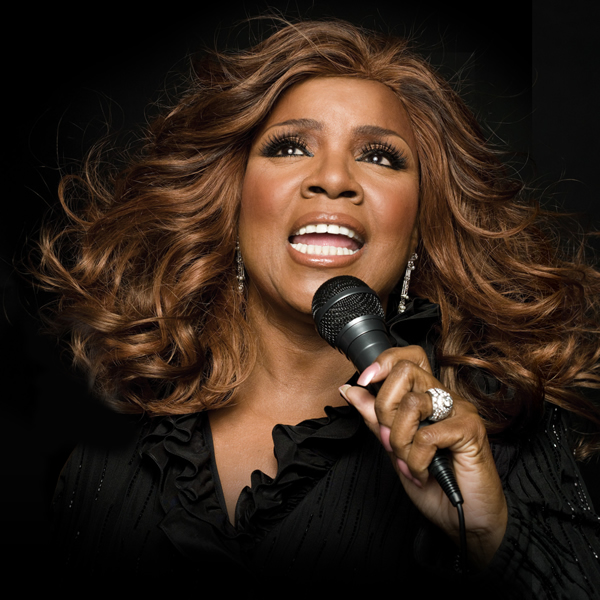
Gloria Gaynor (Photo courtesy LOC)
a&e features
Queer highlights of the 2026 Critics Choice Awards: Aunt Gladys, that ‘Heated Rivalry’ shoutout and more
Amy Madigan’s win in the supporting actress category puts her in serious contention to win the Oscar for ‘Weapons’

From Chelsea Handler shouting out Heated Rivalry in her opening monologue to Amy Madigan proving that horror performances can (and should) be taken seriously, the Critics Choice Awards provided plenty of iconic moments for queer movie fans to celebrate on the long road to Oscar night.
Handler kicked off the ceremony by recapping the biggest moments in pop culture last year, from Wicked: For Good to Sinners. She also made room to joke about the surprise hit TV sensation on everyone’s minds: “Shoutout to Heated Rivalry. Everyone loves it! Gay men love it, women love it, straight men who say they aren’t gay but work out at Equinox love it!”
The back-to-back wins for Jacob Elordi in Frankenstein and Amy Madigan in Weapons are notable, given the horror bias that awards voters typically have. Aunt Gladys instantly became a pop culture phenomenon within the LGBTQ+ community when Zach Cregger’s hit horror comedy released in August, but the thought that Madigan could be a serious awards contender for such a fun, out-there performance seemed improbable to most months ago. Now, considering the sheer amount of critics’ attention she’s received over the past month, there’s no denying she’s in the running for the Oscar.
“I really wasn’t expecting all of this because I thought people would like the movie, and I thought people would dig Gladys, but you love Gladys! I mean, it’s crazy,” Madigan said during her acceptance speech. “I get [sent] makeup tutorials and paintings. I even got one weird thing about how she’s a sex icon also, which I didn’t go too deep into that one.”
Over on the TV side, Rhea Seehorn won in the incredibly competitive best actress in a drama series category for her acclaimed performance as Carol in Pluribus, beating out the likes of Emmy winner Britt Lower for Severance, Carrie Coon for The White Lotus, and Bella Ramsey for The Last of Us. Pluribus, which was created by Breaking Bad’s showrunner Vince Gilligan, has been celebrated by audiences for its rich exploration of queer trauma and conversion therapy.
Jean Smart was Hack’s only win of the night, as Hannah Einbinder couldn’t repeat her Emmy victory in the supporting actress in a comedy series category against Janelle James, who nabbed a trophy for Abbott Elementary. Hacks lost the best comedy series award to The Studio, as it did at the Emmys in September. And in the limited series category, Erin Doherty repeated her Emmy success in supporting actress, joining in yet another Adolescence awards sweep.
As Oscar fans speculate on what these Critics Choice wins mean for future ceremonies, we have next week’s Golden Globes ceremony to look forward to on Jan. 11.
a&e features
Looking back at the 10 biggest A&E stories of 2025
‘Wicked,’ Lady Gaga’s new era, ‘Sexy’ Bailey and more

Although 2025 was a year marked by countless attacks on trans rights and political setbacks, the year also saw brilliant queer artists continuing to create art. From Cannes and Sundance Award winners now vying for Oscar consideration to pop icons entering new stages of their careers, queer people persevered to tell their stories through different media.
With the state of the world so uncertain, perhaps there’s no more vital time to celebrate our wins, as seen through some of this year’s top pop culture moments. While there’s no collection of 10 stories that fully encompass “the most important” news, here are some events that got the gays going:
10. ‘Mysterious Gaze of the Flamingo’ wins big at Cannes

The Cannes Film Festival has become a crucial start for films hoping to make their way to the Oscars, and first-time director Diego Céspedes won the top Un Certain Regard prize for his intimate western “The Mysterious Gaze of the Flamingo.” The film is set in the ‘80s and is intended as an allegory for the AIDS epidemic. Seeing a film that unpacks vital queer history win one of the most coveted awards at Cannes has been a huge point of pride in the independent filmmaking community.
Since the film bowed at Cannes, it has been selected as Chile’s Oscar entry in the Best International Feature race. Speaking with The Blade during the film’s AFI Fest run in October, Céspedes said: At first, I was kind of scared to have this campaign position in the times that we’re living [in] here. But at the same time, I think the Oscars mean a huge platform — a huge platform for art and politics.”
9. ‘The Last of Us’ returns for an even gayer season 2
While the first season of The Last of Us gave us one of TV’s most heartbreaking queer love stories in the episode “Long, Long Time,” Season 2 doubled down on its commitment to queer storytelling with the blossoming relationship between Ellie (Bella Ramsey) and Dina (Isabela Merced). The show expanded on the pair’s relationship in the original video game, making it perhaps the central dynamic to the entire season. That unfortunately came with more homophobic backlash on the internet, but those who checked out all the episodes saw a tender relationship form amid the show’s post-apocalyptic, often violent backdrop. For their performance, Ramsey was once again nominated for an Emmy, but Merced deserved just as much awards attention.
8. ‘Emilia Pérez’ sparks controversy
Jacques Audiard’s genre-bending trans musical “Emilia Pérez” proved to be an awards season juggernaut this time last year, winning the Golden Globe for Best Musical/Comedy. But when the lead star Karla Sofia Gascón’s racist, sexist, and homophobic old tweets resurfaced, the film’s Oscar campaign became a tough sell, especially after Netflix had tried so hard to sell Emilia Pérez as the “progressive” film to vote for. Mind you, the film had already received significant backlash from LGBTQ+ audiences and the Mexican community for its stereotypical and reductive portrayals, but the Gascón controversy made what was originally just social media backlash impossible to ignore. The only person who seemed to come out of the whole debacle unscathed was Zoe Saldaña, who won the Oscar for Best Supporting Actress over Ariana Grande.
7. ‘Sorry, Baby’ establishes Eva Victor as major talent
Back in January at the Sundance Film Festival, Eva Victor (known by many for her brand of sketch comedy) premiered their directorial debut “Sorry, Baby” to rave reviews, even winning the Waldo Salt Screening Award. Victor shadowed Jane Schoenbrun on the set of “I Saw the TV Glow,” and seeing Victor come into their own and establish such a strong voice immediately made them one of independent cinema’s most exciting new voices. A memorable scene in the film sees the main character, Agnes (played by Victor), struggling to check a box for male or female, just one example of how naturally queerness is woven into the fabric of the story.
Most recently, Victor was nominated for a Golden Globe for her performance in the film, and she’s represented in a category alongside Jennifer Lawrence (“Die My Love”), Jessie Buckley (“Hamnet”), Julia Roberts (“After the Hunt”), Renate Reinsve (“Sentimental Value”) and Tessa Thompson (“Hedda”). The film also received four Independent Spirit Award nominations overall.
6. Paul Reubens comes out in posthumous doc

While Paul Reubens never publicly came out as gay before passing away in 2023, the two-part documentary “Pee-wee as Himself” premiered back in May on HBO Max, giving the legendary comedian a chance to posthumously open up to the world. Directed by Matt Wolf, the documentary explores how Reubens found his alter ego Pee-Wee Herman and why he kept his private life private.
The documentary won an Emmy in the Outstanding Documentary or Nonfiction Special category and remains one of the most critically acclaimed titles of the year with a 100% Rotten Tomatoes score. Also worth noting, the National Geographic documentary Sally told the posthumous coming out story of Sally Ride through the help of her long-time partner, Tam O’Shaughnessy.
5. Lady Gaga releases ‘Mayhem’
Lady Gaga entered a new phase of her musical career with the release of Mayhem, her seventh album to date. From the frenzy-inducing pop hit Abracadabra to the memorable Bruno Mars duet featured on “Die With a Smile,” seeing Gaga return to her roots and make an album for the most die-hard of fans was especially rewarding after the underwhelming film releases of “House of Gucci” and “Joker: Folie à Deux.” Gaga has been touring with The Mayhem Ball since July, her first arena tour since 2018. She even extended her tour into 2026 with more North American dates, so the party isn’t stopping anytime soon. And Gaga is even set to make an appearance next May in “The Devil Wears Prada 2.”
4. Cynthia Erivo, Ariana Grande perform at the Oscars

While “Wicked: For Good” didn’t quite reach the heights of the first film, we will forever have Cynthia Erivo and Ariana Grande’s breathtaking live performance that opened the 97th Academy Awards. The pair sang a rendition of “Over the Rainbow,” “Home,” and “Defying Gravity,” paying proper homage to the original 1939 “Wizard of Oz.” Even non-Wicked fans can’t deny how magical and brilliantly staged this performance was. With both Erivo and Grande up for acting Oscars last year, they’re hoping to repeat success and make history with consecutive nominations. Either way, let’s hope there’s another live performance in the making, especially with two new original songs (The Girl in the Bubble and No Place Like Home) in the mix.
3. Indya Moore speaks out against Ryan Murphy
Indya Moore has consistently used social media as a platform for activism, and in September, posted a 30-minute Instagram live speaking out against “Pose” co-creator Ryan Murphy. Moore claimed that Murphy wasn’t being a true activist for trans people. “Ryan Murphy, we need you to do more. You need to address the racism, the violence, and the targeting of people on your productions, Ryan Murphy. You do need to make sure trans people are paid equally. Yes, Janet did the right thing,” Moore said. Murphy was also back in the headlines this year for the critically panned “All’s Fair” and the controversial “Monster: The Ed Gein Story” starring Laurie Metcalf and Charlie Hunnam.
2. Cole Escola wins Tony for Best Leading Actor
Few pop culture moments this year brought us together more than Cole Escola winning a Tony award for “Oh, Mary!” the Broadway show they created, wrote and starred in (we love a triple threat!) Escola made history by becoming the first nonbinary person to win a Tony in the leading actor category, and seeing them excitedly rush to the stage wearing a Bernadette Peters-inspired gown instantly became a viral social media moment.
The cherry on top of Escola’s major moment is the recent news that they are writing a Miss Piggy movie with Jennifer Lawrence and Emma Stone producing — news that also broke the internet for the better. We cannot wait!
1. Jonathan Bailey makes gay history as ‘Sexiest Man Alive’

The same year as his on-screen roles in blockbusters “Jurassic World Rebirth” and “Wicked: For Good,” Jonathan Bailey made history as the first openly gay man to be named People magazine’s “Sexiest Man Alive.” The fact that it took 40 years for an openly gay man to earn the title is a signifier of how far we still have to go with queer representation, and seeing Bailey celebrated is just one small step in the right direction.
“There’s so many people that want to do brilliant stuff who feel like they can’t,” he told PEOPLE, “and I know the LGBT sector is under immense threat at the moment. So it’s been amazing to meet people who have the expertise and see potential that I could have only dreamed of.” In 2024, Bailey founded the charity titled The Shameless Fund, which raises money for LGBTQ+ organizations.
a&e features
Your guide to D.C.’s queer New Year’s Eve parties
Ring in 2026 with drag, leather, Champagne, and more

With Christmas in the rear view mirror, we can turn our attention to ringing in a much-anticipated New Year with a slew of local LGBTQ parties. Here’s what’s on tap.
Pitchers
This spacious Adams Morgan bar is hosting the “Pitchers’ Perfect New Year’s Eve.” There will be a midnight Champagne toast, the ball drop on the big screens, and no cover, all night long. The bar doesn’t close until 4 a.m., and the kitchen will be open late (though not until close). All five floors will be open for the party, and party favors are promised.
Trade
D.C.’s hottest bar/club combo is leaning into the Shark motif with its NYE party, “Feeding Frenzy.” The party is a “glitterati-infused Naughty-cal New Year’s Even in the Shark Tank, where the boats are churning and the sharks are circling.” Trade also boasts no cover charge, with doors opening at 5 p.m. and the aforementioned Shark Tank opening at 9 p.m.. Four DJs will be spread across the two spaces; midnight hostess is played by Vagenesis and the two sea sirens sensuously calling are Anathema and Justin Williams.
Number Nine
While Trade will have two DJs as part of one party, Number Nine will host two separate parties, one on each floor. The first floor is classic Number Nine, a more casual-style event with the countdown on TVs and a Champagne midnight toast. There will be no cover and doors open at 5 p.m. Upstairs will be hosted by Capital Sapphics for its second annual NYE gathering. Tickets (about $50) include a midnight Champagne toast, curated drink menu, sapphic DJ set by Rijak, and tarot readings by Yooji.
Crush
Crush will kick off NYE with a free drag bingo at 8 p.m. for the early birds. Post-bingo, there will be a cover for the rest of the evening, featuring two DJs. The cover ($20 limited pre-sale that includes line skip until 11 p.m.; $25 at the door after 9 p.m.) includes one free N/A or Crush, a Champagne toast, and party favors (“the legal kind”). More details on Eventbrite.
Bunker
This subterranean lair is hosting a NYE party entitled “Frosted & Fur: Aspen After Dark New Year’s Eve Celebration.” Arriety from Rupaul Season 15 is set to host, with International DJ Alex Lo. Doors open at 9 p.m. and close at 3 p.m.; there is a midnight Champagne toast. Cover is $25, plus an optional $99 all-you-can-drink package.
District Eagle
This leather-focused bar is hosting “Bulge” for its NYE party. Each District Eagle floor will have its own music and vibe. Doors run from 7 p.m.-3 a.m. and cover is $15. There will be a Champagne toast at midnight, as well as drink specials during the event.
Kiki, Shakiki
Kiki and its new sister bar program Shakiki (in the old Shakers space) will have the same type of party on New Year’s Eve. Both bars open their doors at 5 p.m. and stay open until closing time. Both will offer a Champagne toast at midnight. At Kiki, DJ Vodkatrina will play; at Shakiki, it’ll be DJ Alex Love. Kiki keeps the party going on New Year’s Day, opening at 2 p.m., to celebrate Kiki’s fourth anniversary. There will be a drag show at 6 p.m. and an early 2000s dance party 4-8 p.m.
Spark
This bar and its new menu of alcoholic and twin N/A drinks will host a NYE party with music by DJ Emerald Fox. Given this menu, there will be a complimentary toast at midnight, guests can choose either sparkling wine with or without alcohol. No cover, but Spark is also offering optional wristbands at the door for $35 open bar 11 p.m.-1 a.m. (mid-shelf liquor & all NA drinks).

